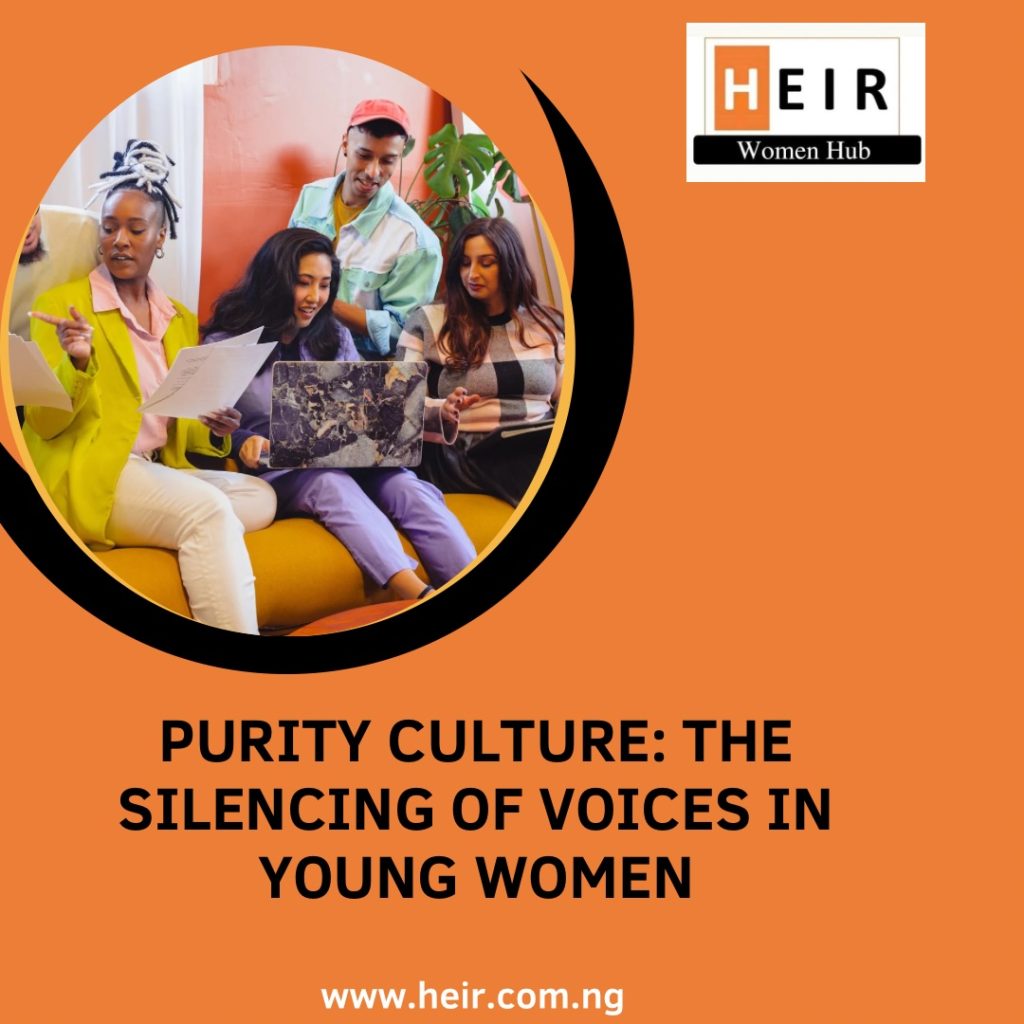
The onset of purity
The root of purity is traced to American Evangelical traditions that is binary and gender stereotypical. Men and women are supposed to be chaste and pure, their bodies and minds are designed to not think or perform sexual pleasure and desires until an appropriate and designated period post marriage, however women are seen to be placed on a higher standard of purity expectations than men.
In expanding this ideology, a study speaks to the outcome of chastity commitments taken up by teenagers in the West, noting that purity culture places shame and silences girls who commit to chastity circles but become involved in premarital sexual activity. Some outcomes find that many teenagers experience unplanned pregnancies more than teenagers who did not enrol to chastity commitments.
Societal norms positions girls chastity differently from boys. Girls are raised to be responsible for the sexual activity of their bodies as well as the irresponsibility of boys and men over their bodies by being conditioned to be more responsible for purity. Some ways by which girls take on the responsibility of other people’s choices is to “behave” a certain manner and also reduce the likelihood that their bodies experience sexual desires. Boys are raised to see women as objects of purity- a balance between pure or used. A girl is “unworthy” if her sexual desires are subjected to the control of boys and shamed to keep herself silenced from speaking up especially in cases of sexual abuse. Boys are seldom raised to be responsible for their actions even when those actions place a girl in a difficult situation such as unplanned pregnancy. Often times, girls bear the burden much more than the boys which sees many girls dropping out of education to raise and nurture children and the boys carry on with fulfilling their dreams. The question is, when will society think differently in creating solutions and interventions that can support the girls and boys? What is the orientation going to look like in the future?
Body autonomy versus control
Purity culture is a requirement that is insinuated across platforms to preserve the body from sexual activity which is considered as a negative experience (sin in some religion) up until there is an appropriate situation, such as marriage, where this pleasures can only be experienced. Men and women are meant to switch off their desires till the right and allocated time and then switch it on when approved. A situation that does not incorporate the biological development of human bodies and the most intelligent way to deal with this emotions.
The questions that we ought to consider is the missing educational opportunities to effectively address purity, body ownership and agency, violation of rights, violence on women’s bodies and consequences of what we uphold as standards and how this actually plays out in the lives of girls and young women. We need to consider who else is responsible? How does this affect the shaming and blaming of girls than boys? Why do some boys and men get away with the abuse of bodies than women? When will boys be held equally accountable and culpable in the participation of a broken purity culture and consequences that girls and women still face?
Our society holds women’s bodies in high standards only when in a state of ‘purity’. Girls and young women are conditioned to feel impure and vulnerable when situations that violate their bodies is experienced especially when not in control of the triggers and situation. As a result, young women are shamed into silence, this leads to more abuse and violent incidents in bodies such as pregnancy termination which are reported to be mostly illegal. Young women are labeled, shamed and blamed for all their bodies experience.
Way forward
While I encourage chastity, I also advocate that this should be a personal decision for all gender. The consequences of all decisions should be considered and examined by the body making the decision. The education of purity demands and contexts should be thoroughly explained at the right age and for an effective orientation of mindsets. For as long as this remains unchanged and lacks clarification, our society may keep getting away with human rights abuses especially netted on girls and young women.
We all need safe spaces that support, entitled to protection and to be fully equipped to prevent our bodies from victimisation.
Añuli Aniebo
References
House, K., & Moslener, S. (2023). Evangelical purity culture and its discontents. Theology & Sexuality, 29(2–3), 83–91. https://doi.org/10.1080/13558358.2024.2332976
Natarajan, Madison & Wilkins, Kerrie & Sista, Anushka & Anantharaman, Aashika & Seils, Natalie. (2022). Decolonizing Purity Culture: Gendered Racism and White Idealization in Evangelical Christianity. Psychology of Women Quarterly. 46. 036168432210911. 10.1177/03616843221091116.
Owens, B. C., Hall, M. E. L., & Anderson, T. L. (2021). The Relationship between Purity Culture and Rape Myth Acceptance. Journal of Psychology and Theology, 49(4), 405-418. https://doi.org/10.1177/0091647120974992
